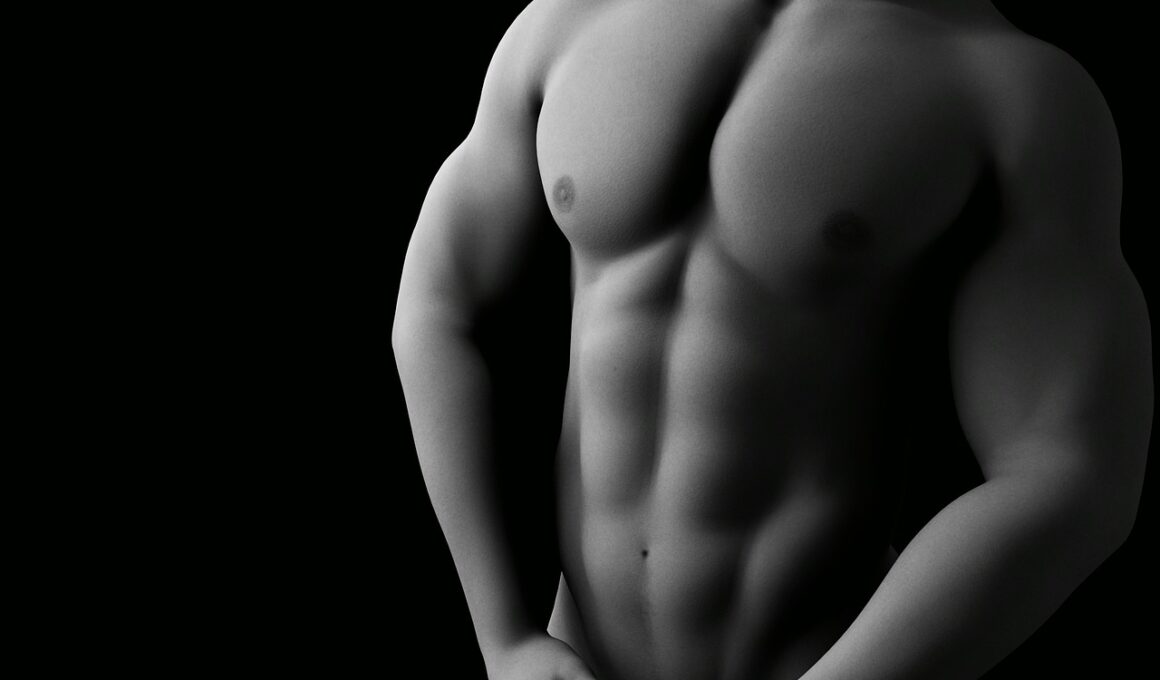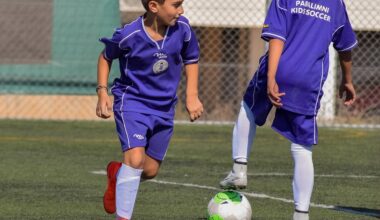Specialty Categories: Wheelchair and Adaptive Bodybuilding
Bodybuilding competitions have evolved significantly to include various categories that cater to all individuals, irrespective of their physical abilities. One of the most notable advancements is the introduction of wheelchair and adaptive bodybuilding categories. These categories allow everyone to showcase their strength, determination, and sculpted physiques on a competitive platform. Competitors in these divisions often face unique challenges, yet they demonstrate incredible resilience and a passion for fitness. Both wheelchair and adaptive categories provide athletes with deserving recognition and visibility, encouraging more individuals to pursue bodybuilding. Each event typically features athletes who have varying disabilities, showcasing an array of incredible physiques that inspire onlookers and potential competitors alike. Promoting inclusive events also sends a powerful message – that bodybuilding is open to all. Competitors undergo rigorous training and maintain discipline to build their physiques and perform in competitions. They demonstrate not just athleticism but a level of dedication and spirit that transcends physical limitations. The spirit of competition encourages athletes to achieve personal bests, fostering an environment of support and motivation.
This inclusivity in specialty categories ensures more participants engage in bodybuilding, granting them the opportunity to shine in the spotlight. Wheelchair and adaptive categories serve as benchmarks for progressive bodybuilding competitions. Many organizations now actively promote these divisions to increase participation rates among athletes with disabilities. Awareness campaigns highlight the incredible potential of adaptive athletes. These individuals aim to redefine the narrative surrounding disabilities, illustrating their strength and commitment to personal fitness goals. Spectators witnessing these events often leave inspired, shifting their perceptions about what athletes can accomplish. Sponsors and brands are beginning to recognize this growing segment and invest in adaptive athletes. Having strong representation in competitions can uplift the visibility of wheelchair and adaptive bodybuilding. Competitions often feature categories based on various classifications, ensuring that athletes compete within similar functional levels. Judging criteria include muscular development, symmetry, and stage presence, as in traditional bodybuilding categories. Adaptive and wheelchair athletes possess a unique stage presence that captivates audiences, showcasing confidence and competence that resonates deeply with fans.
Training and Preparation for Adaptive Athletes
Training regimens adapted for athletes in wheelchair and adaptive bodybuilding highlight their immense dedication and strength. Coaches tailer workouts to suit individual needs, focusing on building muscle groups that enhance overall physique. They employ unique strategies, such as resistance training and water workouts, to help athletes build muscle effectively. Workout plans often emphasize distinct aspects such as upper body strength and core stability, essential for performance during competitions. Additionally, nutritional guidance plays a crucial role in an athlete’s preparation, focusing on fueling their bodies for extensive training sessions. Athletes consume balanced meals designed to meet their energy needs, promote recovery, and maintain lean muscle mass. Moreover, mental training cannot be overlooked in the competitive landscape. Many athletes practice visualization and mindfulness techniques to enhance focus and determination. The process of competing demands emotional resilience, a trait so often embodied by adaptive athletes. Competitors also benefit from community support systems like training groups that foster camaraderie while enhancing motivation. This unique blend of physical and mental fortitude creates an environment where adaptive athletes can thrive and excel in their bodybuilding journeys.
Local and national competitions often highlight the achievements of these athletes, providing platforms to display their hard work. These events emphasize an atmosphere of encouragement and empowerment, enabling competitors to embrace their unique journeys. Innovative event hosting often includes demonstrations from motivational speakers, further emphasizing the importance of adapted fitness. Athletes frequently credit their families and friends for unwavering support, which enhances their performance and involvement in the sport. Viewers often gain valuable insights into the hard work and commitment that these athletes invest. The engagement of fans and supporters also amplifies the reach and appreciation of adaptive bodybuilding. Engaging the audience is crucial; thus, event organizers frequently involve participants in various interactive experiences. Social media platforms play a vital role in spreading awareness of wheelchair and adaptive bodybuilding, showcasing accomplishments to broaden reach. Not just confined to competitions, athletes actively engage with their communities to advocate for inclusivity in sports. Community bodybuilding programs capitalizing on these narratives promote awareness and acceptance, enabling more athletes to pursue their passions and engage in healthy living.
The Role of Organizations in Promoting Adaptive Bodybuilding
Organizations dedicated to promoting bodybuilding competitions have increasingly focused on adaptive athletes. These organizations understand the significance of representation and visibility for individuals with disabilities. They actively engage in partnerships and sponsorships that benefit athletes, giving them the resources necessary for training and competition. As adaptive bodybuilding gains traction, non-profit organizations also serve as vital platforms. They encourage athletes by facilitating workshops and training camps geared towards building skill sets. Through outreach efforts, they inspire newcomers and seasoned athletes alike to embrace bodybuilding as a viable form of exercise. Additionally, these organizations often build alliances with healthcare providers. Such relationships can enhance the well-being and performance of adaptive athletes through tailored programs addressing their unique needs. Promotion extends beyond competitions as organizations advocate for policy changes related to accessibility and inclusion within sports. As adaptive bodybuilding creates ripples across communities, these organizations continue to inform and educate the public. Events allowing adaptive athletes to share their success stories foster empathy and understanding while challenging stereotypes surrounding disabilities. The mission is clear: to assert that bodybuilding is inclusive, empowering all individuals.
Furthermore, social media plays a pivotal role in the promotion of adaptive bodybuilding competitions. Athletes frequently use platforms like Instagram and Twitter for sharing their experiences. They also connect with fans and potential competitors, broadening the community’s reach. Dedicated hashtags allow followers to join the conversation, showcasing various athletes’ accomplishments and training regimens. Such initiatives create a nurturing environment where stories of perseverance can flourish. The increased visibility propels adaptive bodybuilding into mainstream conversations about fitness and health. Brands that align with this mission often find a burgeoning market advocating health and inclusivity. Sponsorships from fitness companies can help enhance athletes’ profiles while garnering awareness for adaptive bodybuilding. Additionally, mainstream bodybuilding competitions are increasingly incorporating adaptive categories into their events. Such inclusivity sends a clear message that all forms of bodybuilding deserve respect and admiration. Athletes can showcase their talents alongside their able-bodied counterparts, enriching the overall competitive environment. Together, these collective efforts push adaptive bodybuilding into a future filled with potential and strength.
Conclusion: The Future of Wheelchair and Adaptive Bodybuilding
The future of wheelchair and adaptive bodybuilding appears bright as more organizations recognize its importance. With heightened awareness comes increased participation in the sport, fostering a community centered around acceptance and empowerment. The continuous efforts of athletes, coaches, and organizations are crucial in challenging perceptions about disabilities in fitness. Overcoming barriers allows athletes to showcase their hard-earned physiques on inclusive stages. Furthermore, the demand for specialized training and nutrition programs will push advancements in adaptive fitness, creating tailored resources to meet diverse needs. The synergy between traditional bodybuilding and adaptive categories enriches the experience for spectators, ensuring that events are engaging and meaningful. As competition levels rise, so will the innovation shown through training methods, competition formats, and performance optimization. Future competitions may even see advanced technology aiding adaptive athletes, thereby breaking boundaries previously thought insurmountable. Creating pathways for collaboration among various sports is also vital, leveraging common experiences to enhance participation. Ultimately, the evolution of bodybuilding competitions towards inclusivity reflects a societal commitment to appreciate the achievements of all athletes, regardless of their background or physical abilities.
As adaptive bodybuilding evolves, it actively encourages the promotion of well-being through fitness. The journey toward breaking stereotypes continues, paving the way for greater acceptance within bodybuilding communities and society. So many talented athletes collaborate and connect, fostering relationships that transform perceptions and empower others. By celebrating the achievements of adaptive athletes, we all shift towards a more inclusive world. The contributions of each athlete reaffirm the notion that strength and perseverance remain at the heart of bodybuilding, enabling athletes to inspire countless others to embark on their journeys. The love for bodybuilding transcends physical limitations; this sport cultivates an enduring spirit of resilience in communities. As public interest grows, attention to adaptive athletes also heightens, reflecting their influence in shaping bodybuilding’s future trajectory. It is vital to ensure that all individuals feel a sense of belonging and can pursue their fitness goals without barriers. Bodybuilding has the potential to unite people from various backgrounds, creating a sense of community while celebrating individual achievements. The passion and pride exhibited in every performance demonstrate that bodybuilding truly accommodates everyone, creating inclusive spaces for all.


